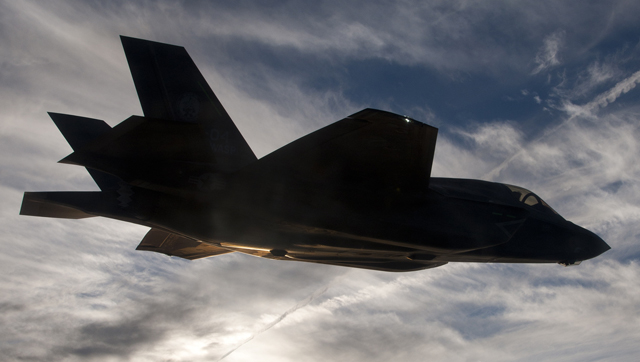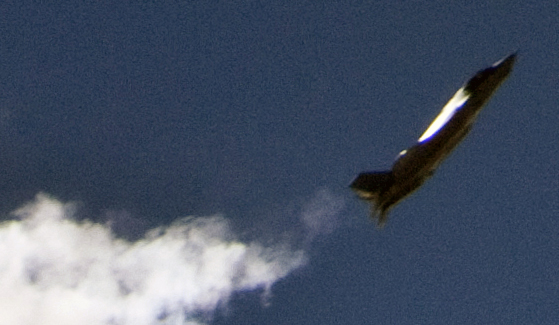Lockheed Martin says it is not disputing the facts laid out in the Pentagon's Director of Operational Test Evaluation (DOT&E) report on the company's F-35 Joint Strike Fighter (JSF), but says that many of the issues raised have already been addressed.
"The challenges that are identified in the report are known items, normal discoveries," says Steve O'Bryan, Lockheed's F-35 business development director. "When you look at it from a holistic sense, when you really talk about beginning OT [operational test] in 2017, these are known discoveries, known challenges, and the kind of normal discoveries you'd see in a flight test programme of this size and complexity." Despite the problems highlighted in the report, O'Bryan says 2012 went very well for the stealthy tri-service fighter. "In my humble opinion, it was our best year on the programme," he says.
There have been a number of significant achievements over the course of the year-more than 65% of the F-35's total of 5000 flight hours have been accumulated in 2012, O'Bryan says. "If you look at flight test overall, we remain about 5% ahead of plan," he says. The F-35 has had its first weapons release and the A-model has flown to its maximum speed, altitude and angle-of-attack. Also, both the A and B model jets have completed engine air-start tests. O'Bryan adds that at this point, the F-35 is more than one-third of its way through its flight test programme. "We are on track to finish development in 2016," he insists.
 |
|---|
Lockheed Martin |
On the manufacturing side, in 2012 the company delivered 30 jets-twice the number delivered in 2011, O'Bryan says. He also says that concurrency costs-which are the cost of implementing modifications to the aircraft as a result of design changes-have started to decrease. "The concurrency cost trajectory is significantly decreasing from the 2011 SAR [selected acquisition report] report in LRIPs [low rate initial production lots] 1 through 4," O'Bryan says. "We expect those to be reflected in the next SAR report."
O'Bryan addresses some of the major problems highlighted in the DOT&E report. One problem, where F-35B short take-off/vertical landing (STOVL) model's durability testing was suspended due to cracking found on a bulkhead flange on the underside of the fuselage during a 7,000-hour inspection, is well on its way to being fixed. Lockheed has found and implemented a solution with a minor "single digit weight impact" and expects to resume tests shortly. "Despite what was reported in some publications, this did not affect STOVL flight testing," O'Bryan says. "STOVL flight testing continued for the whole year."
The STOVL aircraft has had virtually no weight growth for the past 30 months, O'Bryan says. In fact, he says, the weight margin on that variant has increased by better than 100lbs to more than 400lbs, up from about 300lbs. O'Bryan says that if everything works out as the company hopes, that margin should continue to increase if there is no further weight growth.
On the issue of the F-35's software, O'Bryan says that the Block 1 software that has already been delivered is performing very well. A more advanced package called Block 2A has been delivered to Edwards AFB, California, for testing. Later this year, that software block will be delivered to Eglin AFB, Florida, for training. It will allow instructor pilots at the base to use the aircraft's radar, electronic warfare suite, and infrared sensors. It will also enable pilots to simulate weapons releases, O'Bryan says.
As for the DOT&E report, O'Bryan says the company has an agreed upon plan with the F-35 Joint Program Office on developing the software packages which it is implementing. "We have given to flight test much much greater percentages than were talked about there," he says.
 |
|---|
Lockheed Martin |
The DOT&E report says that Lockheed had to defer some flight test points in favor of ones further along in the jet's development. O'Bryan says that is the mark of a flexible flight test programme where more advanced flight characteristics were tested ahead of time while problems in other parts of the flight envelope were addressed. Such adjustments will, by necessity, continue in order to get as much testing done as quickly as possible. "That's a success for the programme," he says.
One such problem was aerodynamic heating on the horizontal tail surfaces of the aircraft at high altitudes and high speeds. The tail coatings were being damaged by friction with the air and heat from the jet's afterburner, O'Bryan says. Flight testing and analysis are complete on the F-35A and new coatings are already being implemented on that model, which should solve the problem. The same testing is underway on the B and C models, O'Bryan says. But those modifications will not be retrofitted to the existing training aircraft until they go into their regular maintenance cycles. "It's not a structural problem, it's a coatings problem," he says.
Lockheed has also discovered the root cause of problems with the weapons bay doors that caused the flight test programme to defer some of the test points that were originally scheduled for 2012. The company is implementing a modification now which still needs to be tested, O'Bryan says.
O'Bryan says that Lockheed is working on fixing problems with transonic roll-off on the F-35. The problem, which manifests itself in the form of uncommanded rolls, occurs at high subsonic speeds at high angles of attack-basically when the aircraft is turning at high altitudes. On the F-35A and F-35B, the company has reduced that flight characteristic to "acceptable levels" by adjusting the flight control schedule software, O'Bryan says. Lockheed is working on implementing similar fixes on the F-35C, but there is a possibility that wing spoilers that were built into that model as a contingency might be needed. "There has been no indication that we need the spoilers yet, but if we do, they are there," he says.
 |
|---|
Lockheed Martin |
For 2013, O'Bryan says the company's goals are to deliver more than 30 aircraft, complete a flight test plan of 1153 flights and 7689 test points, releasing Block 2B to flight test, and releasing Block 2A to the training fleet at Eglin AFB. Lockheed also hopes to complete the first lifetime of durability testing on the F-35B and C, and the company hopes to start delivering guided weapons from the aircraft. There will also be a second round of sea trials for the F-35B on the USS Wasp and operational testers at Nellis AFB, Nevada, should start to receive their first jets. Additionally, the Italian final assembly line should start delivering jets this year, O'Bryan says.
Source: Flight International



















